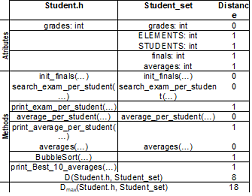Measuring The Distance Between High-Level Models In A Reengineering Process
Abstract
When refactoring high-level models, measuring the differences between the original and the refactored model helps the designers know how the original model was modified and if the transformation added more complexity or/and improved the model. In our previous work, we developed the M2K methodology that parses legacy C code, maps it in a high-level model to represent the domain concepts and proposes a refactored model to improve the mapped design. Based on both models, we propose a distance to indicate, from the domain viewpoint, if the original identified concept keeps the same structure or, conversely, if the refactorings modify the concepts represented in the original model. Our approach is based on models generated through the M2K methodology and does not take into account syntactical variations between models. To show the applicability and the validation of our approach, firstly we show how we apply it on a trivial case study. Then, we show the results of applying our proposal to thirteen case studies (small-scale real projects implemented in C) that were also used to validate the M2K methodology

Copyright (c) 2019 University of Sindh, Jamshoro

This work is licensed under a Creative Commons Attribution-NoDerivatives 4.0 International License.
University of Sindh Journal of Information and Communication Technology (USJICT) follows an Open Access Policy under Attribution-NonCommercial CC-BY-NC license. Researchers can copy and redistribute the material in any medium or format, for any purpose. Authors can self-archive publisher's version of the accepted article in digital repositories and archives.
Upon acceptance, the author must transfer the copyright of this manuscript to the Journal for publication on paper, on data storage media and online with distribution rights to USJICT, University of sindh, Jamshoro, Pakistan. Kindly download the copyright for below and attach as a supplimentry file during article submission











